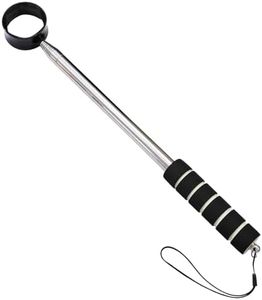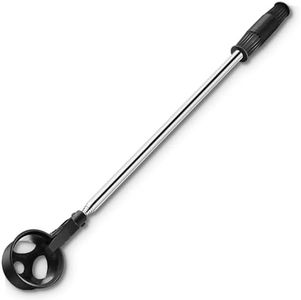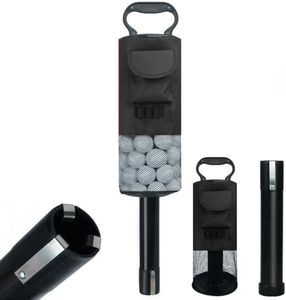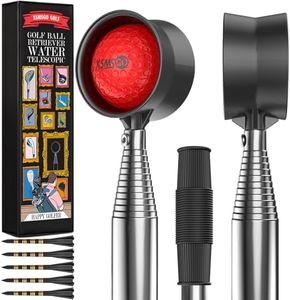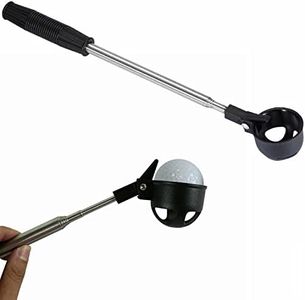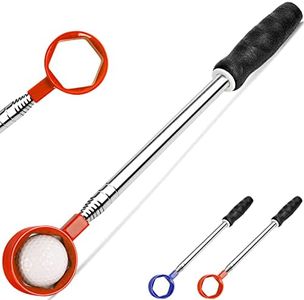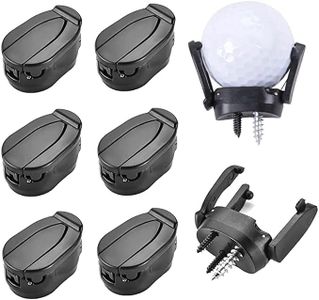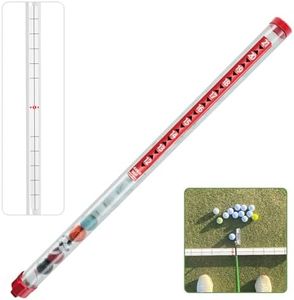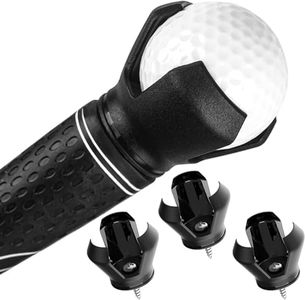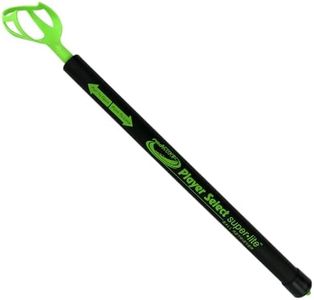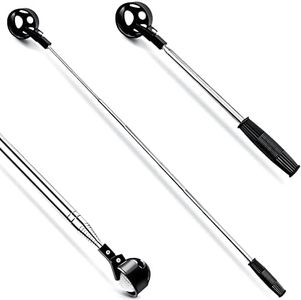We Use CookiesWe use cookies to enhance the security, performance,
functionality and for analytical and promotional activities. By continuing to browse this site you
are agreeing to our privacy policy
10 Best Golf Ball Retrievers
From leading brands and best sellers available on the web.Buying Guide for the Best Golf Ball Retrievers
When choosing a golf ball retriever, your goal is to find a tool that makes it easy to recover balls from hard-to-reach places like ponds, bushes, or deep grass. A good retriever should be easy to handle, long enough for the situations you'll encounter on the course, and sturdy enough to last many rounds. By focusing on a few key features, you can ensure your retriever matches your needs and makes your golf experience more enjoyable.Length (Reach)Length refers to how far the retriever can extend, which determines how deep or distant a ball you can reach. This is important because a longer retriever can help access balls in ponds or under bushes without you getting wet or dirty. Retrievers usually come in several length categories: shorter models (around 6-9 feet) are compact and good for minor reach needs, medium lengths (10-15 feet) balance reach and portability, while extra-long models (16 feet and more) are best for deep water or hard-to-access areas but can be more cumbersome. To pick the right one, think about the courses you play most often—if you rarely encounter deep ponds, a shorter to medium retriever should suffice, but for courses with large water hazards or dense roughs, go for a longer model.
Collapsed SizeCollapsed size refers to how compact the retriever becomes when not in use. This matters because you’ll want something that fits in your golf bag or is easy to carry without being awkward. Compact retrievers (under 2 feet when collapsed) are great for easy storage and carrying, while larger collapsed sizes may offer more reach but can be harder to stow away. Choose a retriever with a collapsed size that comfortably fits your golf bag or cart, especially if you prefer to travel light.
Head DesignThe head design is the part at the end of the retriever that actually grabs the ball. It can vary—scoops, rings, traps, or cups—and each works a little differently in securing the ball. The right design makes it easier to retrieve a ball from water, mud, or tight spots. Simpler heads (like scoops and rings) are versatile and easy to use, while trapping or cup-style heads offer more secure retrieval, especially in water or soft ground. If you often play in areas with water hazards, a secure head design (like a trap or cup) is useful, while for drier areas, a simple scoop or ring may be all you need.
Material and Build QualityThe material and build quality affects both the weight of the retriever and how durable it is over time. Common materials include aluminum, stainless steel, and lightweight plastics. Aluminum is light and reasonably strong, steel is very durable but heavier, and plastics keep weight down but may not last as long. If you want something that's lightweight and easy to maneuver, go for quality aluminum or reinforced plastic; if durability is your top concern (like if you use it frequently or rough terrain is common), a stainless steel retriever might be best.
Grip and Handle ComfortThe grip and handle comfort can make a big difference, especially if you use the retriever often or have to reach far. Some retrievers come with ergonomically designed handles or cushioned grips, making them more comfortable to hold and use without slipping. Basic handles are fine for occasional use, while cushioned or contoured designs are better for frequent use or damp conditions. Consider how much comfort and control you want, especially if you play regularly in wet weather.

